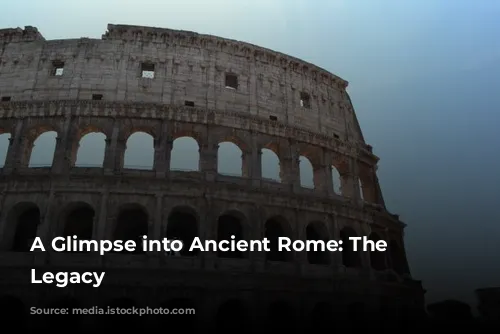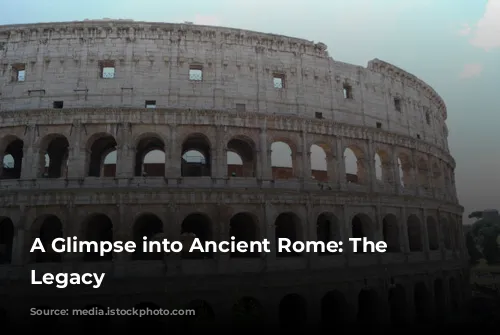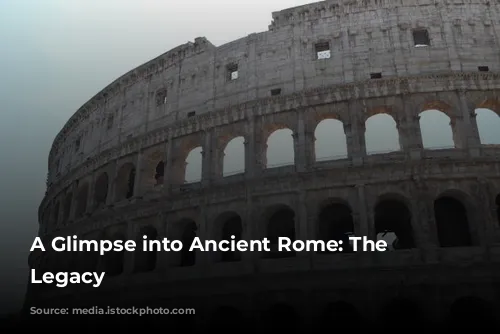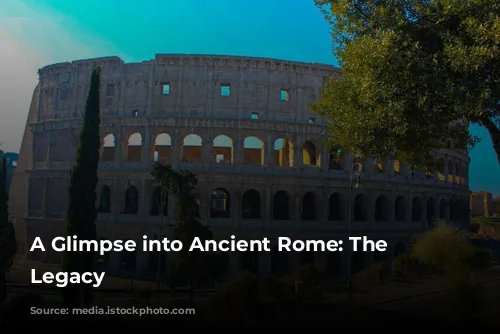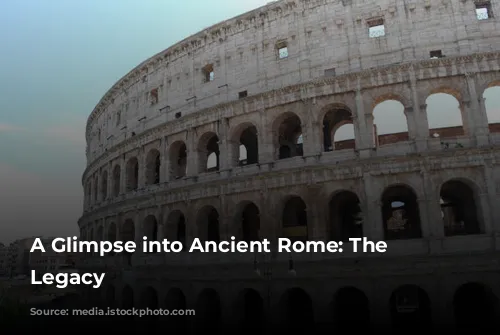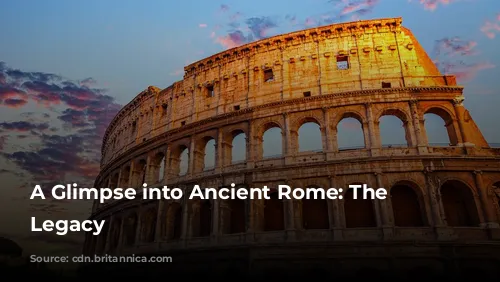Standing tall as a testament to the architectural and engineering brilliance of ancient Rome, the Colosseum remains one of the few largely intact structures from this bygone era. Today, it serves as a major draw for tourists from all corners of the globe, generating substantial income for the Italian government. In 2018 alone, the Colosseum, the Roman Forum, and Palatine Hill collectively brought in over $63.3 million (€53.8 million), making it the most visited tourist attraction in all of Italy.
This paragraph introduces the topic of the Colosseum, emphasizing its historical significance and present-day appeal.
A Monument Through Time: The Colosseum’s Restoration
The Colosseum, a symbol of Roman grandeur, endured a turbulent journey through time. After the fall of the Western Roman Empire, the arena fell into disrepair. In the 12th century, the Frangipane and Annibaldi families repurposed the Colosseum as a fortress, utilizing its imposing structure for their own defense. Later, in the 15th century, Pope Alexander VI granted permission for the Colosseum to be used as a quarry, a sad reflection of the neglect that had befallen this once magnificent monument. However, after over a thousand years of neglect, state-funded restoration efforts began in the 1990s, breathing new life into this iconic structure.
This paragraph delves into the Colosseum’s history, detailing the periods of neglect and the eventual restoration efforts.
A Legacy of Entertainment: The Colosseum’s Purpose
The Colosseum, an amphitheater of unparalleled scale, was built as part of an imperial initiative to revitalize Rome following the tumultuous year known as the “Year of the Four Emperors” in 69 CE. The emperor Vespasian, like other emperors before him, envisioned the Colosseum as a venue for public entertainment. Gladiator fights, animal hunts, and even mock naval battles were staged within its walls, captivating the Roman populace.
This paragraph explores the Colosseum’s original purpose, showcasing its role in Roman society as a hub for entertainment and spectacle.
A Monument of Power: The Colosseum’s Construction
Construction of the Colosseum began under the reign of Emperor Vespasian between 70 and 72 CE. The completed structure was dedicated in 80 CE by his son and successor, Emperor Titus. The Colosseum’s fourth story was added by Emperor Domitian in 82 CE. It is important to note that the funding for this colossal project came from the spoils of war – the plunder from Titus’s conquest of Jerusalem in 70 CE – and the construction was carried out by enslaved Jews from Judaea.
This paragraph details the construction of the Colosseum, highlighting the role of prominent Roman emperors and the use of slave labor in its creation.
An Architectural Marvel: The Colosseum’s Design
The Colosseum, an amphitheater built in Rome under the reign of the Flavian emperors, is also known as the Flavian Amphitheater. This elliptical structure, built of stone, concrete, and tuff, stands four stories tall at its highest point. Measuring 620 by 513 feet (189 by 156 meters), it could accommodate as many as 50,000 spectators. The Colosseum was renowned for its use in gladiatorial combat, a brutal form of entertainment popular in ancient Rome.
This paragraph provides a detailed description of the Colosseum’s design, emphasizing its grandeur and capacity.

A Symbol of Imperial Power: The Colosseum’s Location
The Colosseum, a giant amphitheater built in Rome under the Flavian emperors, stands as a monument to imperial power and spectacle. Construction began sometime between 70 and 72 CE during the reign of Vespasian. It is strategically located just east of the Palatine Hill, on the grounds of what was once Nero’s Golden House. The artificial lake that served as the centerpiece of this opulent palace complex was drained, and the Colosseum was erected in its place. This decision was as much symbolic as it was practical. Vespasian, whose rise to power began in more humble circumstances, chose to replace the tyrannical emperor’s private lake with a public amphitheater that could host tens of thousands of Romans.
This paragraph focuses on the Colosseum’s location, emphasizing the symbolism behind its placement on the grounds of Nero’s former palace.

A Testament to Engineering: The Colosseum’s Structure
Unlike earlier amphitheaters, which were often built into hillsides for support, the Colosseum stands as a freestanding structure of stone and concrete. Its construction utilized a complex system of barrel vaults and groin vaults, resulting in an impressive structure measuring 620 by 513 feet (189 by 156 meters) overall. Three of the arena’s stories are encircled by arcades, framed on the exterior by engaged columns in the Doric, Ionic, and Corinthian orders. This arrangement of columns served as the basis for the Renaissance codification known as the assemblage of orders. The main structural framework and facade are made of travertine, while the secondary walls are of volcanic tufa, and the inner bowl and arcade vaults are constructed of concrete.
This paragraph elaborates on the Colosseum’s architectural features, highlighting its unique design and construction techniques.
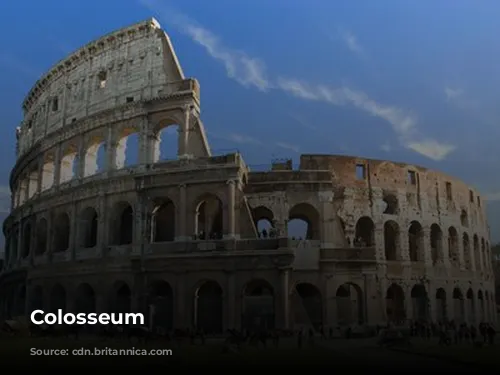
A Venue for Entertainment: The Colosseum’s Usage
The Colosseum was designed to accommodate a vast audience of approximately 50,000 spectators. To shield them from the sun, a massive retractable awning, known as a velarium, was employed. Supporting masts extended from corbels built into the Colosseum’s top story, or attic, and hundreds of Roman sailors were required to manipulate the rigging that extended and retracted the velarium. The Colosseum witnessed thousands of hand-to-hand combats between gladiators, contests between men and animals, and even larger spectacles, including mock naval engagements. While the Colosseum was not confirmed as the site of early Christian martyrs, it remains a place of historical significance and religious importance.
This paragraph explores the Colosseum’s functionality, detailing its capacity, the use of a retractable awning, and the various forms of entertainment that took place within its walls.
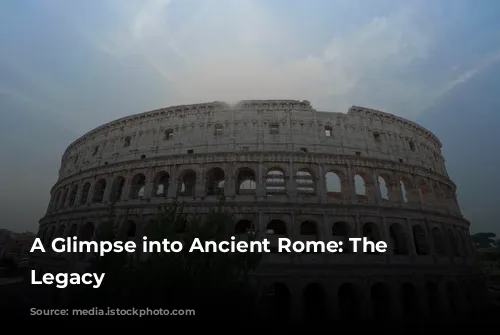
A Timeless Legacy: The Colosseum’s Resilience
In medieval times, the Colosseum found new uses as a church and later as a fortress for two prominent Roman families, the Frangipane and the Annibaldi. However, it suffered damage from lightning strikes, earthquakes, vandalism, and pollution. All of the marble seats and decorative materials disappeared, as the site was treated as little more than a quarry for over a thousand years. The preservation of the Colosseum began in earnest in the 19th century, with notable efforts led by Pius VIII, and a major restoration project was undertaken in the 1990s. Today, it stands as one of Rome’s most popular tourist attractions, attracting close to seven million visitors annually. Regularly changing exhibitions related to the culture of ancient Rome are mounted, offering visitors a glimpse into the fascinating world of the past.
This paragraph outlines the Colosseum’s evolution through the medieval period and highlights the recent restoration efforts that have brought it back to its former glory.
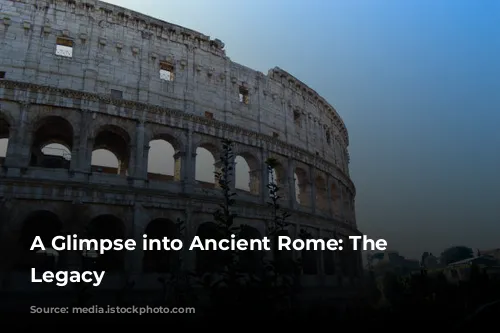
A Monument to the Past: The Colosseum’s Enduring Significance
The Colosseum, a timeless monument to Roman grandeur, continues to inspire awe and wonder in those who behold it. From its origins as a symbol of imperial power and a venue for public entertainment to its enduring status as a major tourist attraction, the Colosseum stands as a testament to the resilience of history and the enduring power of human ingenuity. Its majestic structure and the stories it holds captive continue to resonate with generations, offering a glimpse into a bygone era and a connection to the remarkable achievements of ancient Rome.
This concluding paragraph summarizes the article’s key points, emphasizing the Colosseum’s historical significance and its enduring legacy as a symbol of ancient Rome’s architectural and engineering prowess.
